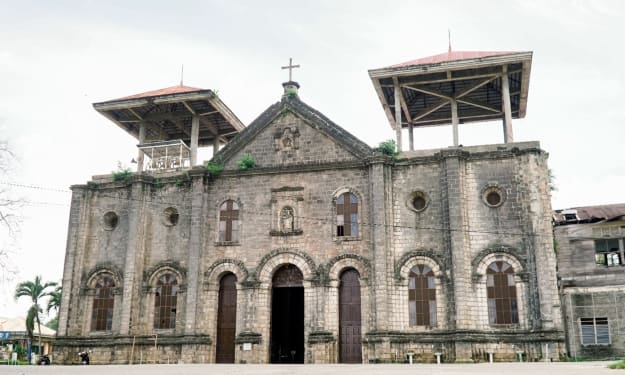
Badulla (Sinhala: බදුල්ල, Tamil: பதுளை) is the capital and the largest city of Uva Province situated in the lower central hills of Sri Lanka. It is the capital city of Uva Province and the Badulla District.
Badulla
Badulu Oya
Badulla is located in the southeast of Kandy, almost encircled by the Badulu Oya River, about 680 m (2,230 ft) above sea level and is surrounded by tea plantations. The city is overshadowed by the Namunukula range of mountains (highest peak 2,016 m (6,614 ft) above sea level). It was a base of a pre-colonial Sinhalese local prince (regional king) who ruled the area under the main King in Kandy before it became part of the British Empire. Later, it became one of the provincial administrative hubs of the British rulers. The city was the terminus of upcountry railway line built by the British in order to take mainly tea plantation products to Colombo.
Badulla was an isolated village until the British built roads from Kandy and Nuwara Eliya in the mid 19th century, as part of the growing plantation economy. By the 20th century Badulla had become a regional hub, with the British establishing it as the capital of Uva Wellassa, now known as the Uva Province. Badulla still has a number of British colonial buildings existing, including the Badulla railway station, St Mark's Church and the Old Welekade Market. Badulla district is one of the leading tea producing districts, second only behind the Nuwara-Eliya District.
The town has grown steadily since the country's independence from approximately 13,000 in 1946, to 38,000 in 1977 and 47,587 in 2011.[1]
Badulla is a multi-national city with the ancient Muthiyangana Temple situated in its heart. The Catholic Church has a diocese headquartered here.
Badulla is about 230 km (140 mi) away from Colombo towards the eastern slopes of the central hills of Sri Lanka. There are multiple routes to Badulla from Colombo, Kandy and Galle. From Colombo, one can travel via Ratnapura, Balangoda, Haputale, Bandarawela and Hali Ela along A4 and A16 to Badulla, which may take 5–6 hours. From Kandy there are two routes: either via "Victoria-Randenigala Raja Mawatha" or via Nuwara Eliya (route A5). From Galle, the best route is via Matara, Hambantota, Wellawaya, Ella, Demodara and Hali Ela (route A2). All routes are scenic and one can see splendid views of the geography, which changes while travelling. Badulla and its surroundings are highly recommended for eco-tourists as Horton Plains National Park and the Knuckles mountains are a few hours away.
Rail
Edit
Main article: Badulla railway station
Badulla railway station is the last station on the Main Line and is 292.3 km (181.6 mi) away from Colombo Fort Station. The line was constructed by the British to transport tea collected from the Badulla district to Colombo.
Badulu Oya
Badulla is located in the southeast of Kandy, almost encircled by the Badulu Oya River, about 680 m (2,230 ft) above sea level and is surrounded by tea plantations. The city is overshadowed by the Namunukula range of mountains (highest peak 2,016 m (6,614 ft) above sea level). It was a base of a pre-colonial Sinhalese local prince (regional king) who ruled the area under the main King in Kandy before it became part of the British Empire. Later, it became one of the provincial administrative hubs of the British rulers. The city was the terminus of upcountry railway line built by the British in order to take mainly tea plantation products to Colombo.
Badulla railway station is the last station on the Main Line and is 292.3 km (181.6 mi) away from Colombo Fort Station. The line was constructed by the British to transport tea collected from the Badulla district to Colombo.
About the Creator
Enjoyed the story? Support the Creator.
Subscribe for free to receive all their stories in your feed. You could also pledge your support or give them a one-off tip, letting them know you appreciate their work.





Comments
There are no comments for this story
Be the first to respond and start the conversation.